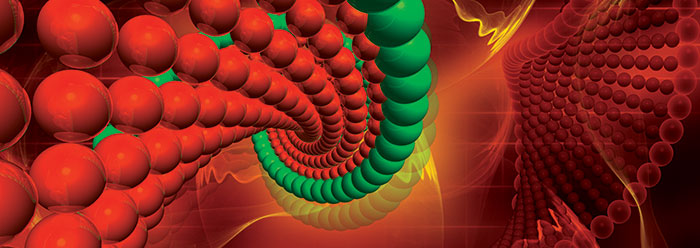In the past, evolutionists have tried to prove human evolution by comparing only similar DNA segments between humans and apes—disregarding the non-similar DNA regions.1 Many evolutionary studies have involved the selective use of protein-coding segments in the genome called genes. But comparing just the genes of humans and apes produces much higher DNA similarities than many other regions of the genome would yield.
Surprisingly, a recent study compared chimpanzee chromosomes to their similar human-counterpart chromosomes using highly optimized DNA matching conditions and found that the chimpanzee genome was only 70 percent similar to human overall.2 But what about the protein-coding genes? In humans, less than 3 percent of the genome is thought to contain actual protein-coding sequence, while the rest of the genome is involved in controlling how genes work and other aspects of chromosome function.3
Of the genes that are found in both species, evolutionists have only reported on the sub-segments of the genes that are similar. Because of these highly selective studies, we really don’t know how similar human genes are to ape genes because non-similar data were discarded. Therefore, an extensive study is in progress at the Institute for Creation Research to compare a wide variety of primate gene data sets against a comprehensive database of known human gene variants.
So how does a scientist extract only the gene-based information from a genome? When protein-coding genes are active, they produce RNA copies of genes called transcripts or messenger RNAs (mRNA) that are used by the cell to make proteins. Using specialized techniques, these mRNAs can be captured and then sequenced. The mRNA sequences from one organism can then be compared to that of another to gauge how similar the genes are.
To create an exhaustive database of human genes, the DNA sequences of nearly nine million different human mRNA variants were downloaded from the National Center for Biotechnology Information (NCBI) public database. Even though the human genome is thought to only contain about 22,000 genes, many different gene variants can be produced through a process called alternative splicing.4 After setting up the target human gene database, query data sets containing the gene sequences from a diversity of primates were also downloaded.
Although the study is just beginning, interesting patterns are beginning to emerge that challenge the standard evolutionary model of human origins. First, it looks as though all apes and monkeys contain significant portions of their genes that are very similar to parts of human genes. However, the primate genes also contain significant sections that are specific to their kind (e.g., chimp, gorilla, orangutan, etc.) that are not found in human genes.
While we are early in the research, the similarity in the statistics and patterns observed are not supportive of the standard Darwinian evolutionary dogma. Instead, the mosaic-type picture starting to emerge is that humans, along with each type of primate, were uniquely created “after their kind.” Because of similarities in physiology and overall general anatomical features between humans and primates, certain sections of programming code (DNA sequence) have been repeated—a logical prediction for any type of engineered system. Stay tuned as more details of the study will be revealed in the next issue’s Research Column.
References
- Tomkins, J. and J. Bergman. 2012. Genomic monkey business— estimates of nearly identical human-chimp DNA similarity re-evaluated using omitted data. Journal of Creation. 26 (1): 94-100.
- Tomkins, J. 2013. Comprehensive Analysis of Chimpanzee and Human Chromosomes Reveals Average DNA Similarity of 70%. Answers Research Journal. 6 (2013): 63-69.
- Tomkins, J. 2012. Junk DNA Myth Continues Its Demise. Acts & Facts. 41 (11): 11-13.
- Tomkins, J. 2012. The Irreducibly Complex Genome: Designed from the Beginning. Acts & Facts. 41 (3): 6.
* Dr. Tomkins is Research Associate at the Institute for Creation Research and received his Ph.D. in Genetics from Clemson University.
Cite this article: Tomkins, J. 2013. How Similar Are Human and Ape Genes? Acts & Facts. 42 (5): 9.









